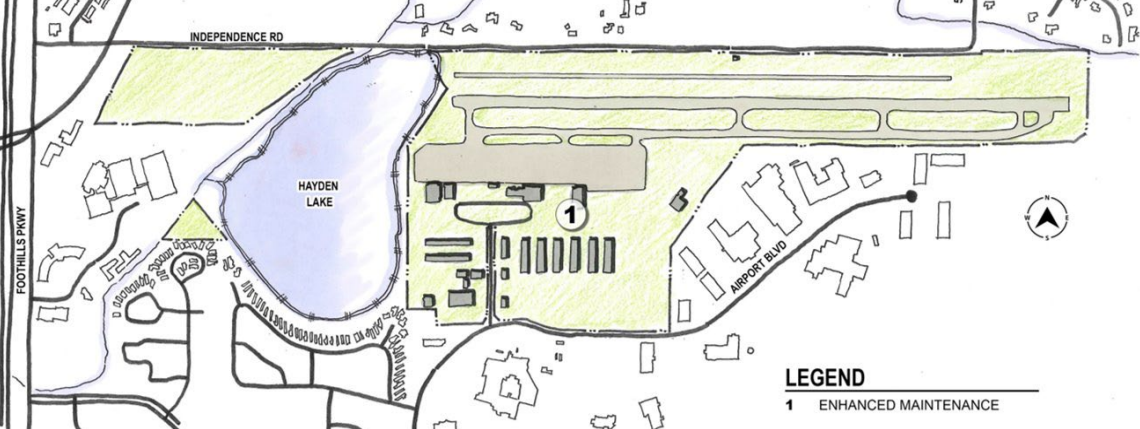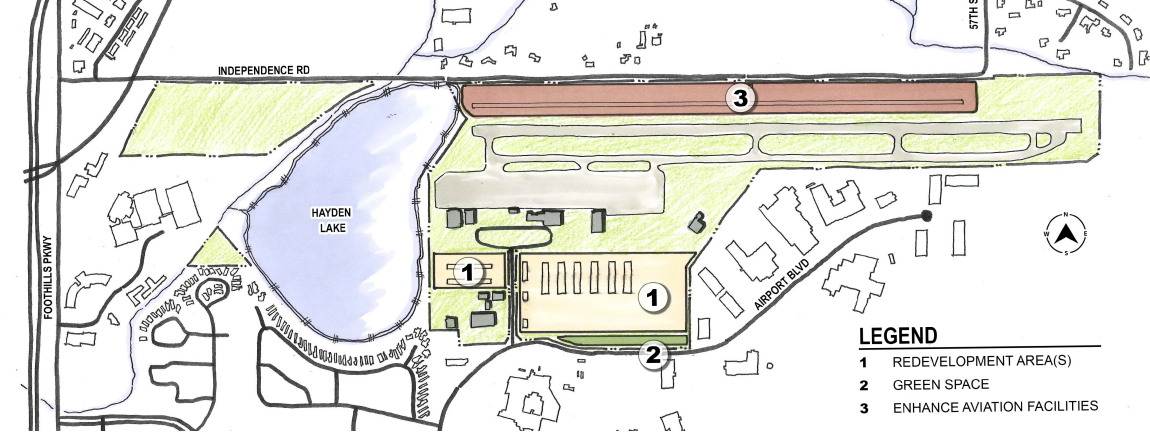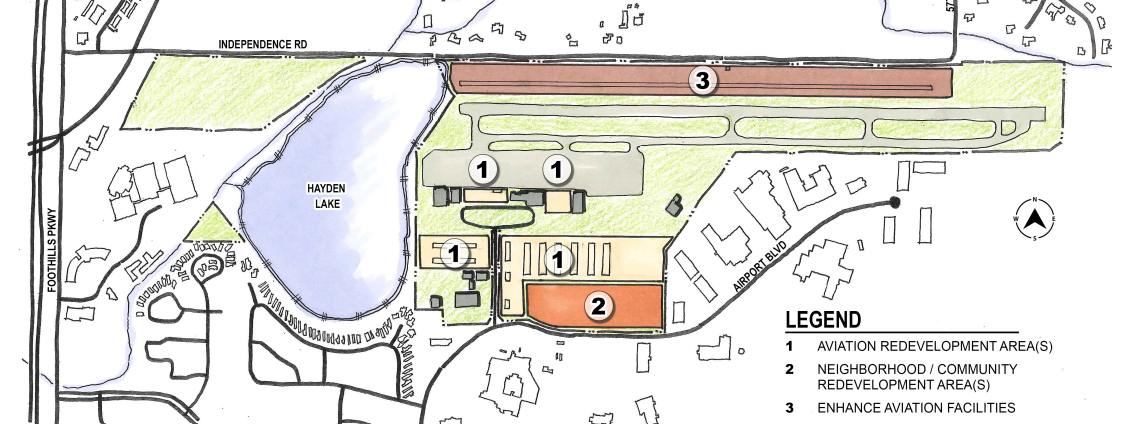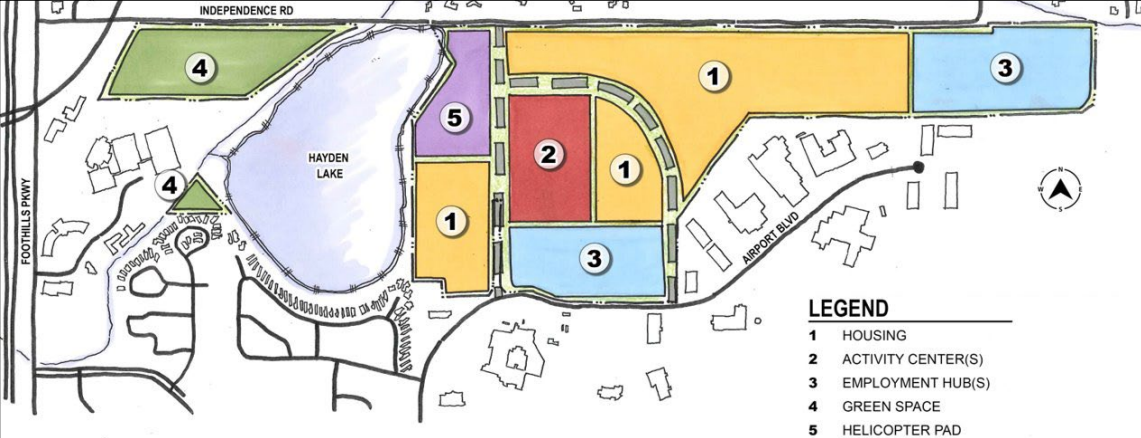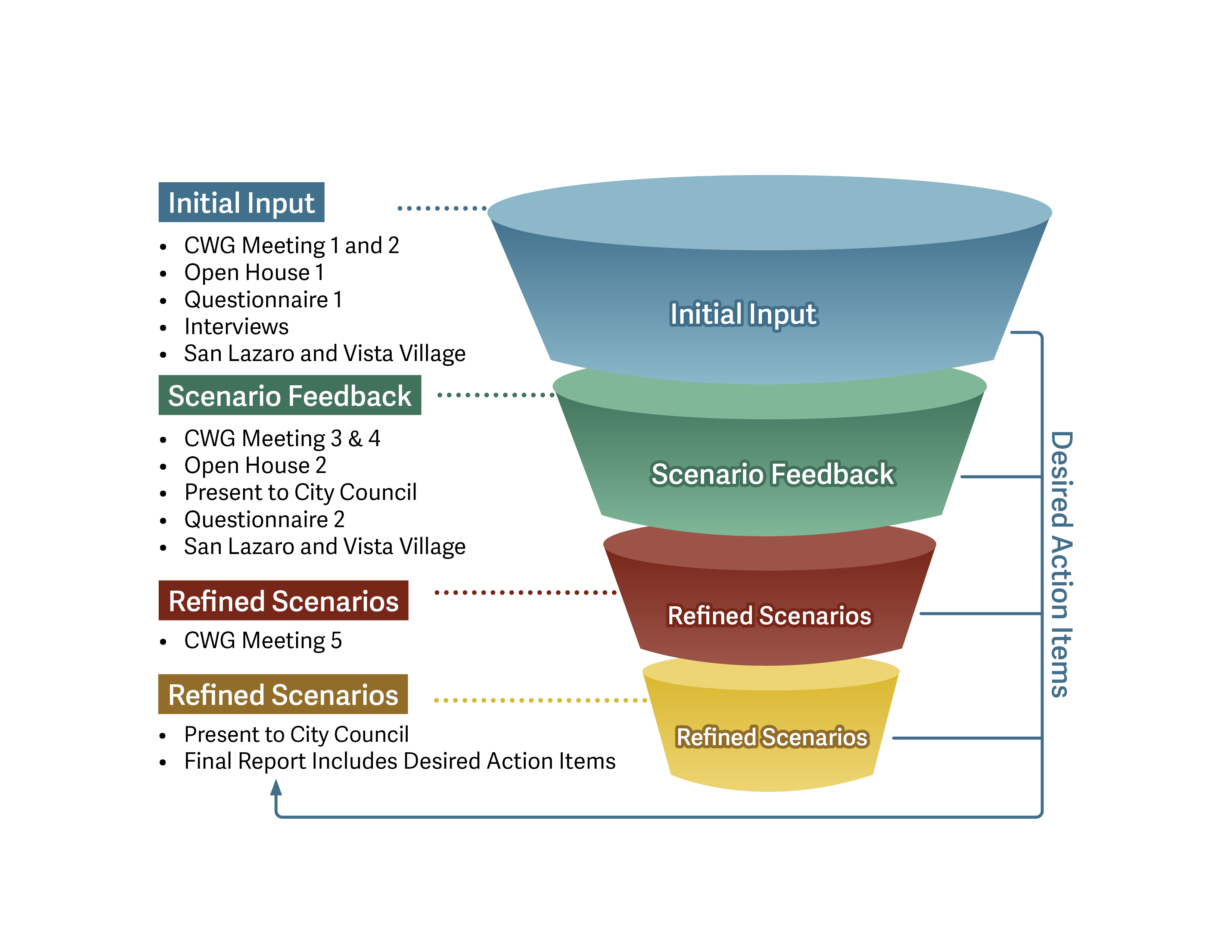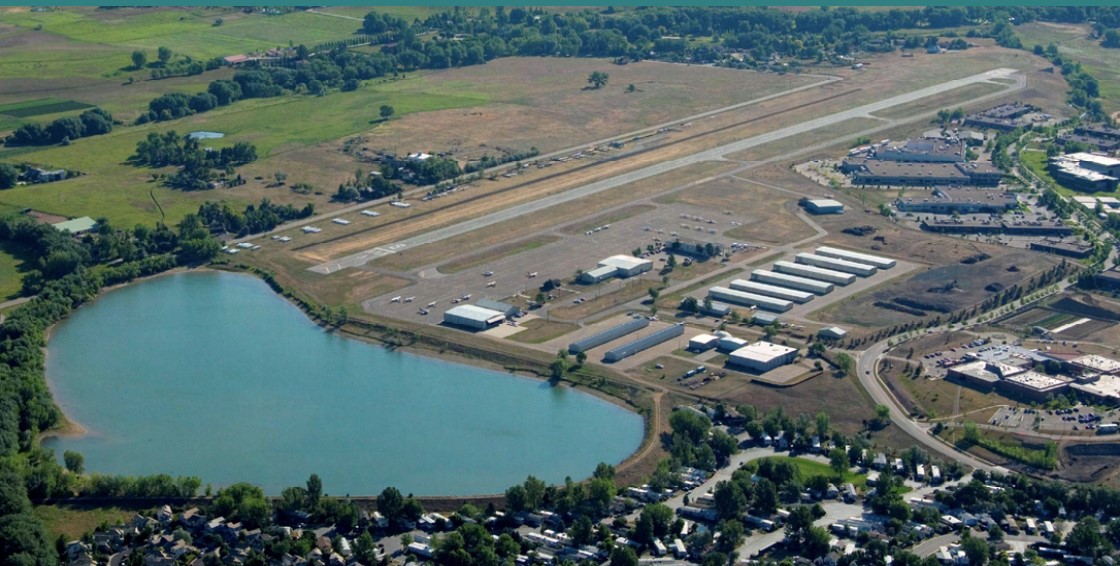
Courtesy of Rubino Surveying, Boulder, Colorado
Aerial view of Boulder Municipal Airport, May 2006
Project Overview
Boulder Municipal Airport is a general aviation airport that offers business, private and recreational aviation services to the city and surrounding communities.
Through the project, the city developed a deeper understanding of the community’s desired future for the airport site. The project provided city leadership with four community-supported scenarios for the future of the site to help guide next steps while being mindful of the city’s long-term commitments to the Federal Aviation Administration (FAA).
There are many complex issues and possibilities to explore. While community engagement is complete, city staff will continue to follow up on additional information requested by City Council on behalf of the community.
Goals
- Understand the community’s short-term goals and long-term aspirations for the airport site
- Identify key issues and opportunities for consideration
- Identify a range of possible scenarios and a preferred scenario(s) for the airport site's future
- Recommend next steps

